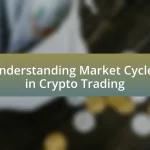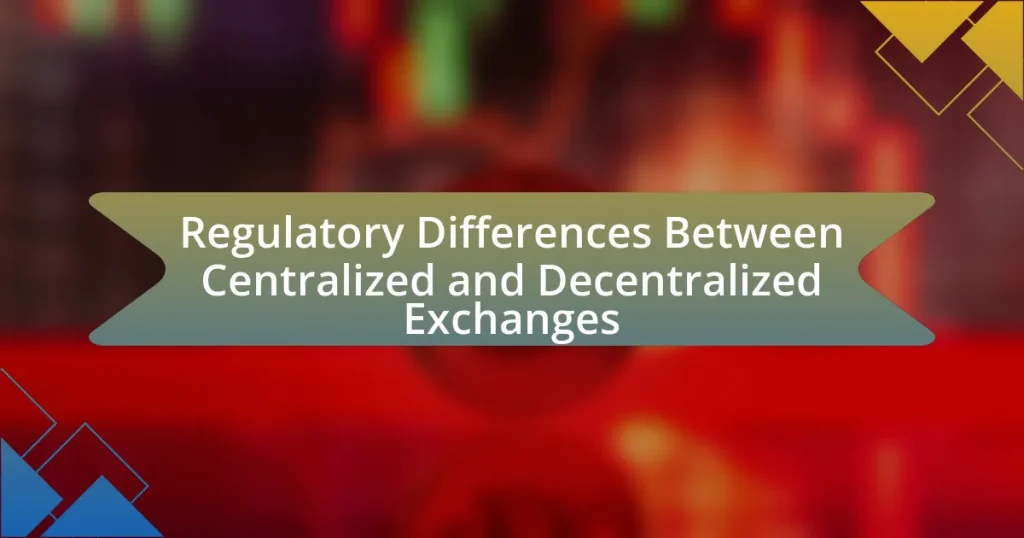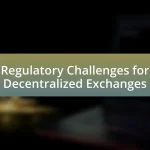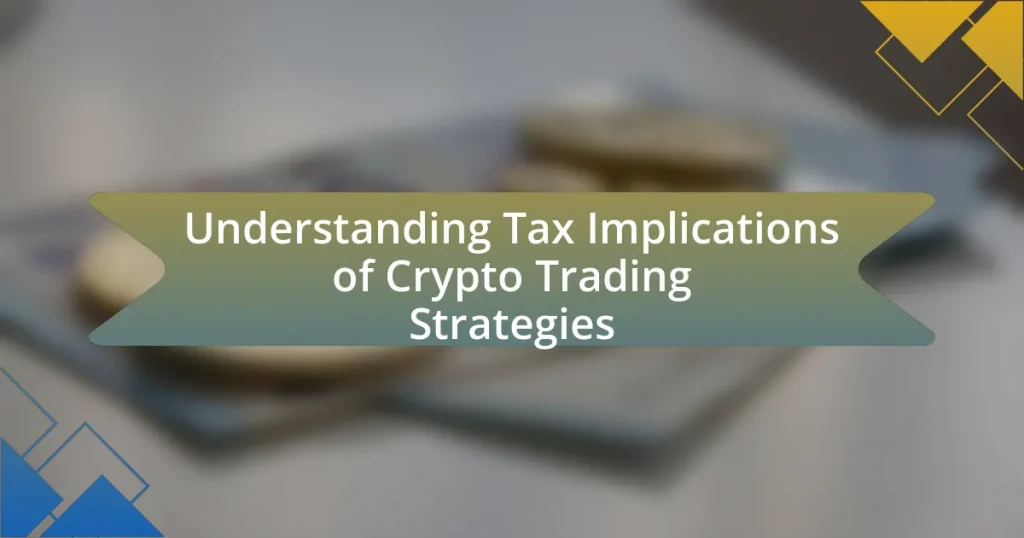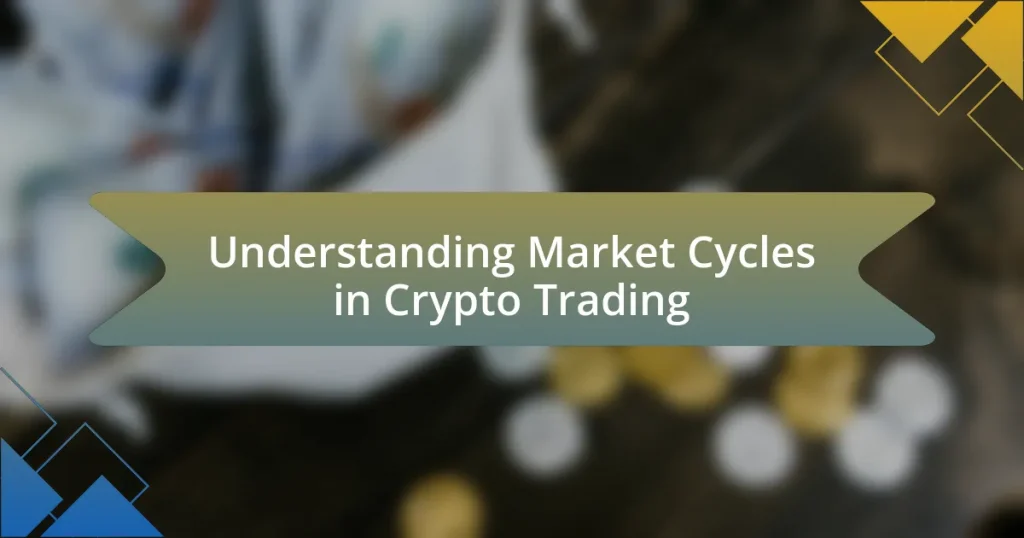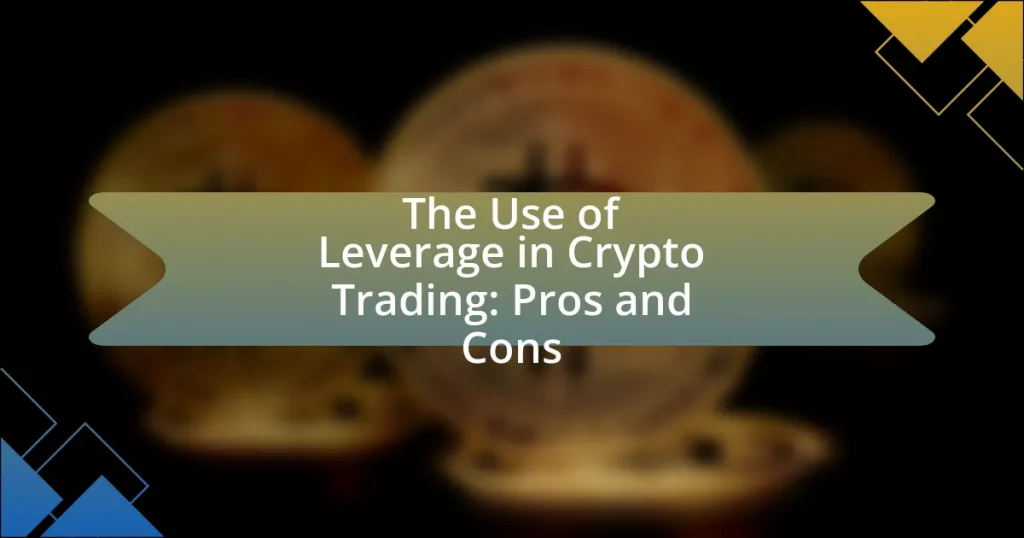The article examines the regulatory differences between centralized exchanges (CEXs) and decentralized exchanges (DEXs) in the cryptocurrency market. CEXs are subject to strict regulatory oversight, including compliance with anti-money laundering (AML) and know your customer (KYC) regulations, while DEXs operate with minimal regulation, allowing for greater user anonymity. The article details how CEXs ensure compliance through robust procedures and the implications of these regulations on user security and trading practices. Additionally, it discusses the challenges DEXs face regarding regulatory compliance and the evolving global regulatory landscape that impacts both types of exchanges. Understanding these differences is crucial for users to navigate the risks and protections associated with trading on these platforms.
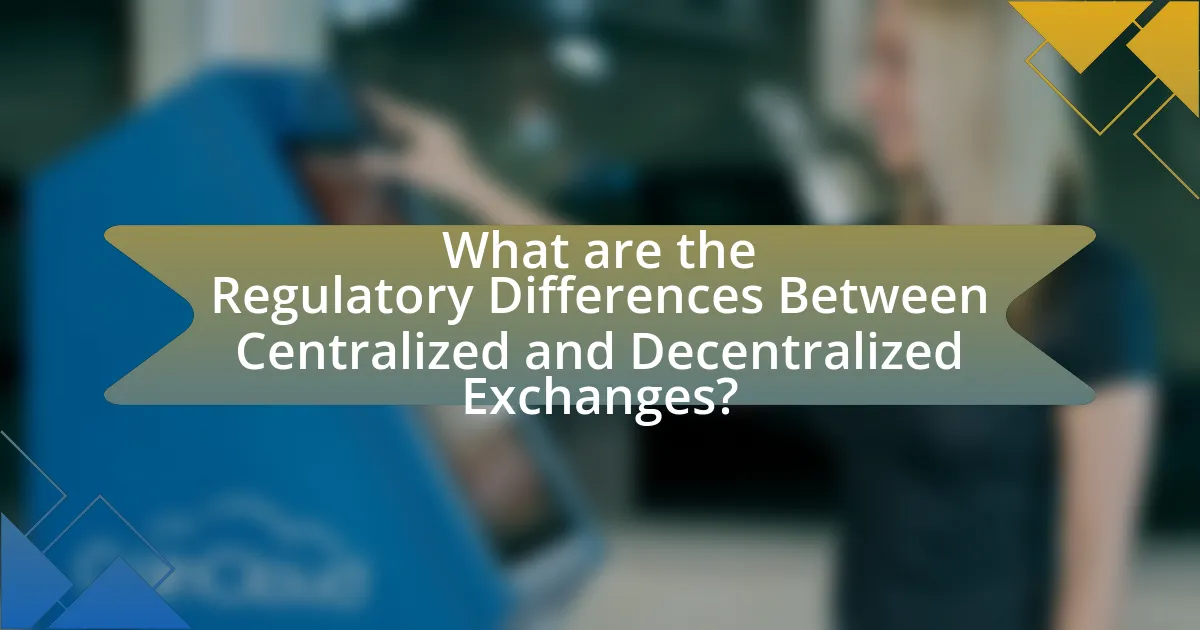
What are the Regulatory Differences Between Centralized and Decentralized Exchanges?
Centralized exchanges (CEXs) are subject to strict regulatory oversight, requiring licenses and compliance with anti-money laundering (AML) and know your customer (KYC) regulations, while decentralized exchanges (DEXs) operate with minimal regulation, often avoiding KYC and AML requirements due to their peer-to-peer nature. CEXs must adhere to the legal frameworks of the jurisdictions they operate in, which can include regular audits and reporting to financial authorities, whereas DEXs typically do not have a central authority to enforce such regulations, leading to a more anonymous trading environment. This regulatory landscape reflects the broader trend of governments seeking to impose controls on financial transactions to prevent illicit activities, as seen in various countries implementing specific laws targeting cryptocurrency exchanges.
How do centralized exchanges operate within regulatory frameworks?
Centralized exchanges operate within regulatory frameworks by adhering to specific laws and guidelines set by financial authorities in their jurisdictions. These exchanges typically register as money services businesses or securities exchanges, depending on the assets they trade, and comply with anti-money laundering (AML) and know your customer (KYC) regulations. For example, in the United States, centralized exchanges must register with the Financial Crimes Enforcement Network (FinCEN) and may also need to comply with state-level regulations, such as those enforced by the New York State Department of Financial Services (NYDFS). This regulatory compliance ensures that centralized exchanges maintain transparency, protect consumer interests, and mitigate risks associated with fraud and market manipulation.
What specific regulations apply to centralized exchanges?
Centralized exchanges are subject to specific regulations that vary by jurisdiction but generally include anti-money laundering (AML) laws, know your customer (KYC) requirements, and securities regulations. For instance, in the United States, centralized exchanges must register with the Financial Crimes Enforcement Network (FinCEN) and comply with the Bank Secrecy Act, which mandates reporting suspicious activities and maintaining customer identification programs. Additionally, if the exchange offers trading of securities, it must register with the Securities and Exchange Commission (SEC) and adhere to regulations that govern securities trading. These regulations are designed to protect consumers, prevent fraud, and ensure market integrity.
How do centralized exchanges ensure compliance with these regulations?
Centralized exchanges ensure compliance with regulations by implementing robust Know Your Customer (KYC) and Anti-Money Laundering (AML) procedures. These exchanges collect and verify user identities, which helps prevent illicit activities and aligns with legal requirements set by financial authorities. For instance, many centralized exchanges utilize automated systems to monitor transactions for suspicious activity, thereby adhering to regulatory standards. Additionally, they often collaborate with regulatory bodies to stay updated on evolving laws and guidelines, ensuring their operations remain compliant. This proactive approach is essential for maintaining trust and legitimacy in the financial ecosystem.
What are the operational characteristics of decentralized exchanges?
Decentralized exchanges (DEXs) operate without a central authority, allowing peer-to-peer trading of cryptocurrencies directly between users. This structure enhances user privacy and control over funds, as traders retain ownership of their assets throughout the transaction process. DEXs utilize smart contracts on blockchain networks to facilitate trades, ensuring transparency and security through immutable transaction records. Additionally, they often feature lower fees compared to centralized exchanges due to the absence of intermediaries. The operational model of DEXs also promotes greater accessibility, as users can trade without the need for extensive verification processes typical of centralized platforms.
How do decentralized exchanges differ from centralized exchanges in terms of regulation?
Decentralized exchanges (DEXs) differ from centralized exchanges (CEXs) primarily in their regulatory oversight; DEXs typically operate with minimal or no regulatory compliance, while CEXs are subject to stringent regulations imposed by financial authorities. CEXs must adhere to Know Your Customer (KYC) and Anti-Money Laundering (AML) regulations, which require user identification and transaction monitoring to prevent illicit activities. In contrast, DEXs often allow users to trade directly from their wallets without the need for personal information, resulting in a lack of regulatory scrutiny. This fundamental difference in regulatory approach stems from the operational structure of DEXs, which are built on blockchain technology and prioritize user privacy and autonomy, whereas CEXs function as intermediaries that facilitate trades and are accountable to regulatory bodies.
What challenges do decentralized exchanges face regarding regulatory compliance?
Decentralized exchanges face significant challenges regarding regulatory compliance primarily due to their lack of centralized control and the pseudonymous nature of transactions. This decentralized structure complicates the enforcement of Know Your Customer (KYC) and Anti-Money Laundering (AML) regulations, which are standard requirements for centralized exchanges. For instance, regulators often struggle to identify users and monitor transactions effectively, leading to potential legal liabilities for operators. Additionally, the evolving regulatory landscape, with different jurisdictions imposing varying rules, creates uncertainty for decentralized exchanges, making it difficult to ensure compliance across multiple regions. This uncertainty can hinder their ability to operate legally and attract users who prioritize regulatory adherence.
Why is understanding these regulatory differences important for users?
Understanding regulatory differences is crucial for users because it directly impacts their legal protections, security measures, and potential liabilities when engaging with centralized or decentralized exchanges. Centralized exchanges often comply with strict regulations, providing users with consumer protections such as insurance against losses and recourse in case of fraud. In contrast, decentralized exchanges may operate with fewer regulations, which can expose users to higher risks, including the potential for loss of funds without any recourse. For instance, a report by the Financial Action Task Force highlights that users of decentralized platforms may face challenges in recovering assets due to the lack of regulatory oversight. Therefore, comprehending these differences enables users to make informed decisions about where to trade, aligning their risk tolerance with the regulatory environment of the exchange they choose.
How do regulatory differences impact user security and protection?
Regulatory differences significantly impact user security and protection by determining the level of oversight and compliance required for exchanges. Centralized exchanges often operate under strict regulations, which can enhance user security through measures such as mandatory KYC (Know Your Customer) protocols and insurance against losses. For instance, in jurisdictions like the United States, the SEC enforces regulations that require exchanges to implement robust security measures, thereby protecting users from fraud and theft.
In contrast, decentralized exchanges typically face less regulatory scrutiny, which can lead to vulnerabilities such as lack of user recourse in cases of hacks or scams. Without regulatory frameworks, users may have limited protection against malicious activities, as seen in incidents where decentralized platforms have been exploited due to inadequate security protocols. Therefore, the regulatory environment directly influences the security landscape, with stricter regulations generally correlating with enhanced user protection.
What implications do these differences have for trading practices?
The regulatory differences between centralized and decentralized exchanges significantly impact trading practices. Centralized exchanges, governed by strict regulations, require traders to comply with Know Your Customer (KYC) and Anti-Money Laundering (AML) policies, which can limit anonymity and increase the time needed for account verification. In contrast, decentralized exchanges often allow for greater privacy and faster transactions, as they typically do not enforce KYC regulations, enabling users to trade without revealing personal information. This fundamental difference influences traders’ choices, as those prioritizing privacy may prefer decentralized platforms, while those seeking security and regulatory compliance may opt for centralized exchanges. The implications extend to market liquidity, risk management, and the overall trading experience, as traders navigate the varying degrees of regulatory oversight and operational transparency inherent in each type of exchange.
What are the key regulatory bodies overseeing exchanges?
The key regulatory bodies overseeing exchanges include the Securities and Exchange Commission (SEC) in the United States, the Commodity Futures Trading Commission (CFTC), and the Financial Conduct Authority (FCA) in the United Kingdom. These organizations are responsible for enforcing laws and regulations that govern trading activities, ensuring market integrity, and protecting investors. For instance, the SEC regulates securities exchanges and has the authority to enforce compliance with securities laws, while the CFTC oversees derivatives markets, including futures and options. The FCA regulates financial markets in the UK, ensuring that firms operate in a manner that is fair and transparent.
How do these regulatory bodies influence centralized exchanges?
Regulatory bodies influence centralized exchanges by establishing compliance requirements that these platforms must adhere to in order to operate legally. For instance, regulations often mandate Know Your Customer (KYC) and Anti-Money Laundering (AML) procedures, which require exchanges to verify the identities of their users and monitor transactions for suspicious activity. This regulatory oversight aims to enhance consumer protection and prevent illicit activities, thereby shaping the operational frameworks of centralized exchanges. In the United States, the Financial Crimes Enforcement Network (FinCEN) enforces these regulations, compelling exchanges to register as money services businesses and comply with federal laws, which directly impacts their business models and operational practices.
What role do regulatory bodies play in the oversight of decentralized exchanges?
Regulatory bodies play a crucial role in overseeing decentralized exchanges by establishing guidelines that aim to protect investors and ensure market integrity. These bodies, such as the U.S. Securities and Exchange Commission (SEC) and the Financial Conduct Authority (FCA) in the UK, monitor compliance with existing financial regulations, which can include anti-money laundering (AML) and know your customer (KYC) requirements. For instance, the SEC has indicated that certain tokens traded on decentralized exchanges may qualify as securities, thus subjecting them to regulatory scrutiny. This oversight is essential to mitigate risks associated with fraud and market manipulation, as evidenced by the increasing number of enforcement actions taken against non-compliant platforms.
How do global regulatory approaches differ for exchanges?
Global regulatory approaches for exchanges differ significantly based on jurisdiction, with some countries adopting strict regulations while others maintain a more lenient stance. For instance, the United States enforces rigorous compliance requirements for centralized exchanges, including registration with the Securities and Exchange Commission (SEC) and adherence to Anti-Money Laundering (AML) laws, whereas countries like Malta have implemented a more favorable regulatory framework to attract cryptocurrency businesses. This divergence is further exemplified by the European Union’s Markets in Crypto-Assets (MiCA) regulation, which aims to create a unified regulatory environment across member states, contrasting with the fragmented regulatory landscape in Asia, where countries like China have imposed outright bans on cryptocurrency exchanges while others, such as Japan, have established licensing systems.
What are the major regulatory frameworks in different countries?
Major regulatory frameworks in different countries include the European Union’s Markets in Crypto-Assets (MiCA) regulation, the United States’ Securities and Exchange Commission (SEC) regulations, and Japan’s Financial Services Agency (FSA) guidelines. The MiCA framework aims to create a comprehensive regulatory environment for cryptocurrencies and digital assets across EU member states, enhancing consumer protection and market integrity. In the U.S., the SEC focuses on classifying cryptocurrencies as securities, which subjects them to strict regulatory oversight. Japan’s FSA has established a licensing system for cryptocurrency exchanges, ensuring compliance with anti-money laundering (AML) and consumer protection standards. These frameworks reflect varying approaches to cryptocurrency regulation, balancing innovation with risk management.
How do these frameworks affect the operation of centralized versus decentralized exchanges?
Regulatory frameworks significantly influence the operation of centralized and decentralized exchanges by imposing different compliance requirements. Centralized exchanges, which operate under specific jurisdictions, must adhere to stringent regulations such as Know Your Customer (KYC) and Anti-Money Laundering (AML) laws, ensuring user identification and transaction monitoring. For instance, in the United States, centralized exchanges like Coinbase are required to register with the Financial Crimes Enforcement Network (FinCEN) and comply with state regulations, which can limit their operational flexibility.
In contrast, decentralized exchanges (DEXs) typically operate without a central authority and often do not require KYC processes, allowing for greater user anonymity and fewer regulatory burdens. However, this lack of regulation can lead to increased risks of fraud and market manipulation. The European Union’s Markets in Crypto-Assets (MiCA) regulation aims to address these disparities by proposing a framework that could bring DEXs under certain regulatory oversight, potentially altering their operational dynamics. Thus, the regulatory environment shapes how centralized exchanges manage compliance and risk, while also influencing the operational freedom and security challenges faced by decentralized exchanges.
What future trends are emerging in exchange regulation?
Future trends in exchange regulation include increased scrutiny on decentralized exchanges (DEXs) and the implementation of stricter compliance measures for centralized exchanges (CEXs). Regulatory bodies are focusing on enhancing transparency and consumer protection, particularly in the wake of high-profile incidents involving fraud and market manipulation. For instance, the Financial Action Task Force (FATF) has emphasized the need for DEXs to adhere to anti-money laundering (AML) standards, which could lead to more stringent regulations in the decentralized space. Additionally, the rise of stablecoins is prompting regulators to establish clearer guidelines to ensure financial stability and mitigate risks associated with digital assets. These trends indicate a shift towards a more harmonized regulatory framework that addresses the unique challenges posed by both centralized and decentralized exchanges.
How might regulations evolve for decentralized exchanges in the coming years?
Regulations for decentralized exchanges (DEXs) are likely to evolve towards increased oversight and compliance requirements in the coming years. As governments and regulatory bodies recognize the growing influence of DEXs in the cryptocurrency market, they may implement frameworks that mandate Know Your Customer (KYC) and Anti-Money Laundering (AML) practices similar to those required for centralized exchanges. For instance, the Financial Action Task Force (FATF) has already suggested that DEXs should adhere to the same standards as traditional financial institutions to combat illicit activities. Additionally, jurisdictions may introduce specific licensing requirements for DEX operators to ensure consumer protection and market integrity, reflecting trends seen in the European Union’s Markets in Crypto-Assets (MiCA) regulation.
What potential changes could impact centralized exchanges moving forward?
Potential changes that could impact centralized exchanges moving forward include increased regulatory scrutiny and the adoption of decentralized finance (DeFi) technologies. Regulatory bodies worldwide are tightening rules around anti-money laundering (AML) and know your customer (KYC) requirements, which could lead to higher compliance costs for centralized exchanges. For instance, the Financial Action Task Force (FATF) has issued guidelines that require exchanges to implement stricter KYC measures, potentially limiting their operational flexibility. Additionally, the rise of DeFi platforms, which offer similar services without intermediaries, may attract users away from centralized exchanges, as evidenced by the significant growth in DeFi’s total value locked, which surpassed $100 billion in 2021. These factors indicate that centralized exchanges must adapt to a rapidly evolving regulatory landscape and competitive environment to remain viable.
What best practices should users follow regarding exchange regulations?
Users should ensure compliance with local laws and regulations when engaging with exchanges. This includes verifying the exchange’s regulatory status, understanding the legal implications of trading in their jurisdiction, and ensuring that the exchange implements Know Your Customer (KYC) and Anti-Money Laundering (AML) practices. For instance, in the United States, exchanges must register with the Financial Crimes Enforcement Network (FinCEN) and comply with state regulations, which reinforces the importance of users being aware of these requirements to avoid legal issues.
How can users stay informed about regulatory changes affecting exchanges?
Users can stay informed about regulatory changes affecting exchanges by regularly monitoring official government websites, financial regulatory authorities, and industry news outlets. These sources provide timely updates on new regulations, compliance requirements, and enforcement actions that impact both centralized and decentralized exchanges. For instance, the U.S. Securities and Exchange Commission (SEC) and the Commodity Futures Trading Commission (CFTC) frequently publish press releases and regulatory guidance that are crucial for users to understand the evolving landscape. Additionally, subscribing to newsletters from reputable financial news organizations can help users receive curated information directly related to regulatory developments in the exchange sector.
What steps can users take to ensure compliance when trading on exchanges?
Users can ensure compliance when trading on exchanges by conducting thorough research on the regulatory requirements specific to their jurisdiction and the exchange they are using. This includes verifying the exchange’s licensing status, understanding the Know Your Customer (KYC) and Anti-Money Laundering (AML) policies, and ensuring that they provide all necessary documentation as required by the exchange. Additionally, users should stay informed about changes in regulations that may affect their trading activities, as compliance requirements can evolve. For instance, in the United States, the Financial Crimes Enforcement Network (FinCEN) mandates that exchanges implement robust KYC and AML measures, which users must adhere to in order to trade legally.

